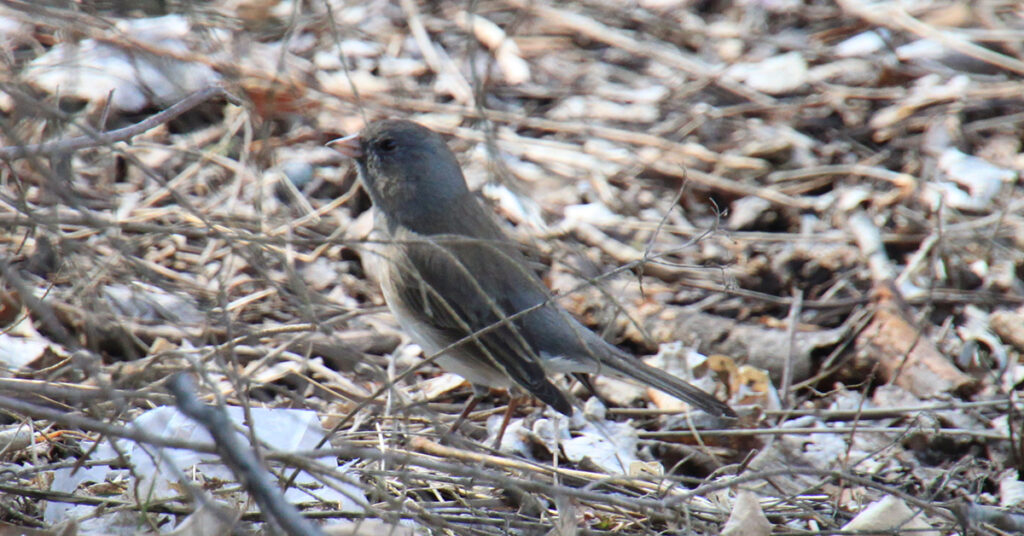Dark-eyed juncos are back in Southern Wisconsin!
This small, round bird is one of the most common winter visitors in North America and displays different physical characteristics across the continent. In Wisconsin, you’ll most likely encounter the slate-colored junco during winter. These dark-eyed birds have a pink bill, white belly, and slate-gray to charcoal-colored chest, head, and back. Their white outer tail feathers form a distinct “V” shape when the birds spread their tails in flight. Females and juveniles are browner in color compared to the darker gray plumage of adult males.
Dark-eyed juncos are often called snowbirds because many are medium-distance migrants. They breed in Canada and Alaska and migrate south throughout the U.S. for the winter. In Wisconsin, large numbers of migrating juncos typically arrive in early October and return north to their breeding territories in late April. Some populations, however, are year-round residents, particularly in the western states, northern Wisconsin, and the Appalachian Mountains.
During the breeding season, dark-eyed juncos prefer to nest in coniferous or mixed forests, though they can also be found in a variety of woodland habitats. In winter, they favor partially open areas such as parks, backyards, fields, and roadsides. Juncos are primarily seed-eaters and are easily attracted to bird feeders, though they also consume a variety of insects during the breeding season.
Interested in similar topics? Explore more articles tagged with Birds, Winter Birds, and Fall Migration.


